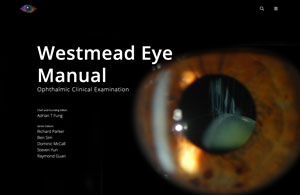26 Lens Management
26.1 Phaco-Vitrectomy
26.2 Pars Plana Lensectomy
26.3 Intraocular Lens Explantation
26.4 Secondary Intraocular Lens Insertion Clinical Scenarios & Clinical Decision Making
26.5 Sulcus Intraocular Lens
26.6 Anterior Chamber Intraocular Lens
26.7 Iris Fixated Intraocular Lenses
26.8.1 Scleral Sutured Intraocular Lens – Traditional 2 Point Fixation
26.8.2 Scleral Sutured Posterior Chamber Intraocular Lens 4 Point Fixation
26.8.3 Scleral Sutured Posterior Chamber Intraocular Lens – “Hoffman” Corneoscleral Pockets
26.8.4 Alternate Technique to Rescue a Dislocated IOL – Triangular Scleral Flap, Sutured IOL Technique
26.8.5 Suturing Without Exchanging the Intraocular Lens
26.9 Sutureless Scleral Fixation of an Intraocular Lens
26.4 Secondary Intraocular Lens Insertion Clinical Scenarios & Clinical Decision Making
Intraocular lens (IOL) insertion may occur at the time of lensectomy (cataract extraction or refractive lens exchange) or as a secondary procedure at a later operation. Scenarios in which secondary lens implantation is indicated include:
1. Aphakia
The decision to leave a patient aphakic may be made in several scenarios including:
- After vitreoretinal surgery with lensectomy, particularly if further vitrectomy surgery is required (e.g. removal of silicone oil) and there is concern that primary insertion of an IOL may be complicated by posterior synechiae or pigment deposition on the IOL which will impede the view of the fundus
- Cataract extraction in children with uveitis or congenital cataracts
- Lens subluxation with significant zonular loss when a vitreoretinal surgeon is not immediately available.
- Traumatic or complicated cataract surgery with capsular violation when a vitreoretinal surgeon is not immediately available
2. Pseudophakic Patient with a Subluxed or Dislocated PCIOL
Several risk factors predispose the pseudophakic patient to lens subluxation / dislocation (Figure 26.4.1). Common causes include trauma, pseudoexfoliation syndrome, and connective tissue disorders such as Marfan disease.
If the dislocated IOL is a three-piece lens (Figure 26.4.2), it may be readily repositioned by scleral fixation to avoid new corneal or scleral wounds for explantation of the dislocated lens and insertion of a secondary lens. On the other hand, repositioning one-piece lenses is associated with a higher risk of iris chafe, Uveitis-Glaucoma-Hyphema (UGH) syndrome, and other complications, and should not be performed.
3. Posteriorly Displaced Nucleus
Patients may be referred with a posteriorly displaced native lens nucleus following complicated cataract surgery.
4. Opacified IOL
Previously placed IOLs may opacify and cause visual disturbance, necessitating their removal. Particularly, hydrophilic IOLs (such as the Bausch and Lomb Akreos AO60) have a propensity to opacify with the use of gas tamponade. If the opacification is visually significant, IOL explantation may be indicated (Figure 26.4.3).
All rights reserved. No part of this publication which includes all images and diagrams may be reproduced, distributed, or transmitted in any form or by any means, including photocopying, recording, or other electronic or mechanical methods, without the prior written permission of the authors, except in the case of brief quotations embodied in critical reviews and certain other noncommercial uses permitted by copyright law.
Westmead Eye Manual
This invaluable open-source textbook for eye care professionals summarises the steps ophthalmologists need to perform when examining a patient.



